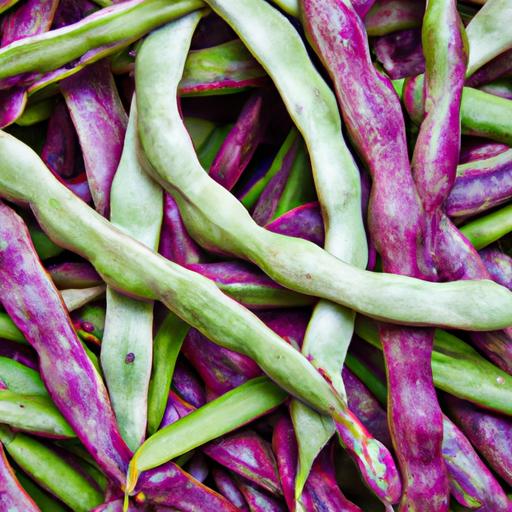Exploring the Wonderful World of Wax Beans
If you’re looking to add vibrant color and a delightful crunch to your next meal, look no further than wax beans. These slender, yellow-podded wonders are a summer favorite, bringing a burst of freshness to any dish. In this blog post, we’ll dive into the world of wax beans, exploring their taste, common uses in cooking, nutritional value, and intriguing history. So grab your apron, and let’s get started!
A Taste of Sunshine
Wax beans, also known as yellow beans, are a variant of the common green bean. Their unique yellow color adds a touch of sunshine to your plate, making them as aesthetically pleasing as they are delicious. The taste of wax beans is slightly sweeter and milder compared to their green counterparts, making them an excellent choice for those who prefer a more subtle flavor.
Versatile and Vibrant
Wax beans offer a wide range of culinary possibilities. They can be enjoyed raw, blanched, steamed, stir-fried, or included in a variety of dishes, adding both color and texture. Their crispness is an especially valuable asset when it comes to stir-frying, as they retain their crunch even after being sautéed at high heat.
One delightful way to make use of wax beans is by incorporating them into salads. Their sunny yellow hue adds visual appeal, while the crisp texture adds another layer of interest to the ensemble of flavors. Whether tossed with a simple vinaigrette or combined with other fresh vegetables, the addition of wax beans brings a welcome twist to any salad creation.
Nutritional Powerhouse
Not only are wax beans a treat for the taste buds, but they also pack a nutritional punch. They are an excellent source of fiber, promoting healthy digestion and providing a feeling of fullness. Wax beans are also rich in vitamins A and C, both of which contribute to a strong immune system and maintain healthy skin.
Furthermore, these beans are a good source of folate, which is essential for pregnant women and supports the production of DNA and red blood cells. Combined with their low-calorie content, wax beans present themselves as a nutritious choice for those aiming to incorporate more wholesome foods into their diet.
A Historical Snapshot
While wax beans may appear modern and trendy, their history can be traced back to ancient times. Native to South America, wax beans were introduced to Europe after Christopher Columbus’s expeditions. They quickly became popular due to their appealing taste and vibrant color.
Interestingly, wax beans got their name due to their waxy sheen which covers the pods. This natural coating not only adds a distinctive look but also serves as a natural protection against pests and moisture loss. Today, wax beans can be found in various countries around the globe, and their versatility has made them a beloved ingredient in both traditional and contemporary cuisines.
In Conclusion
Wax beans are a true delight for the senses. With their sunny appearance, mild flavor, and crunchiness, they can elevate any dish with ease. Whether you sauté them alongside other vegetables, toss them into a refreshing summer salad, or simply enjoy them raw, their versatility ensures they’ll never be short of demand.
Next time you see these vibrant yellow beans at your local market, be sure to add them to your shopping basket. Not only will they brighten up your plate, but they’ll also bring a touch of history to your culinary adventures. So go ahead, savor the taste of sunshine with wax beans!
Name: Wax Beans
Origin: Wax beans, also known as yellow beans or butter beans, are a variety of Phaseolus vulgaris, which is native to Central and South America. They were introduced to Europe by Christopher Columbus during his voyages to the New World in the late 15th century. Wax beans get their name from their waxy, yellow color and smooth, tender texture.
Common Uses: Wax beans are commonly used in cooking due to their mild, slightly sweet flavor and crisp texture. They can be eaten both raw and cooked. Raw wax beans can be enjoyed in salads or as a crunchy snack. When cooked, they can be boiled, steamed, sautéed, stir-fried, or even pickled. They are often used as a side dish, in casseroles, soups, stir-fries, or mixed vegetable medleys.
Nutritional Benefits: Wax beans are a nutritious vegetable with various health benefits. They are low in calories and fat while being a good source of dietary fiber, vitamin C, and vitamin A. Additionally, they provide minerals such as iron, calcium, and potassium. Wax beans are also rich in antioxidants that can help protect the body against cell damage caused by harmful molecules called free radicals.
Unique Properties and Historical Significance: Wax beans are named for their distinct yellow color, which sets them apart from other green varieties of beans. This color results from the presence of carotenoid pigments, such as lutein and zeaxanthin. These compounds not only contribute to the vibrant color but also provide potential eye health benefits. Wax beans have a shorter cooking time compared to other bean varieties, making them a convenient option in the kitchen. Historically, beans, including wax beans, have been cultivated and consumed for thousands of years, playing a significant role in the diets of many cultures around the world.




Use the share button below if you liked it.
It makes me smile, when I see it.